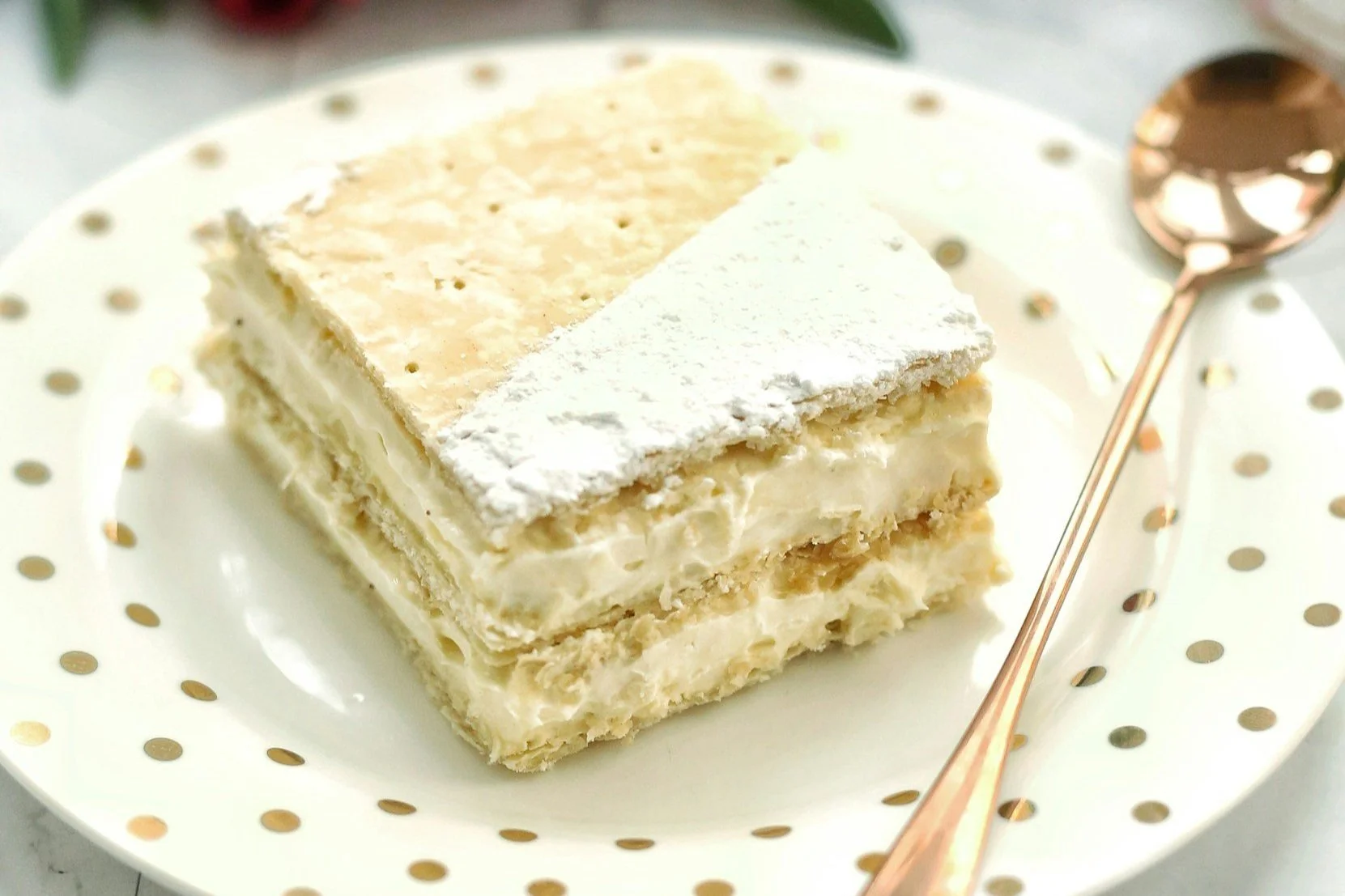From Baba’s Hands to Bake Sales: Ukrainian Honey Cakes in Rural Alberta
Part of the series: Ukrainian Prairie Stories – Recipes and Roots Across the Land
Key Takeaways
Honey cakes (medivnyk) were a treasured part of Ukrainian baking traditions, tied to holidays, hospitality, and preservation.
Ukrainian settlers adapted these spiced cakes to prairie ingredients and baking conditions in Alberta.
Honey was a locally accessible sweetener and symbol of both health and abundance.
Honey cakes became central to community life through church teas, bake sales, and holiday markets.
Their persistence reflects the evolution of ancestral recipes in prairie kitchens and the resilience of cultural identity.
Table of Contents
→ A Cake from the Old Country: What Is Medivnyk?
→ Honey as a Sweetener and a Symbol
→ Prairie Pantries and Ukrainian Baking Adaptations
→ Celebration, Faith, and the Sunday Table
→ Church Teas and Bake Sales: The Modern Life of Honey Cake
→ The Prairie Pantry Baker: Tools, Timing, and Techniques
→ Honey in the Old Country: Symbolism and Stewardship
→ Preserving Identity, One Slice at a Time
→ A Taste that Remembers: How Honey Cake Carries Heritage
A Cake from the Old Country: What Is Medivnyk?
In Ukrainian tradition, medivnyk is a dense, dark honey cake spiced with cinnamon, cloves, and sometimes coffee or cocoa. Though simple in its, ingredients the cake was rich in symbolism and carefully reserved for feast days—especially Christmas, New Year’s, and major weddings. In some regions, it was part of ritual offerings, tied to both the sweetness of life and the warmth of shared gatherings.
When Ukrainian immigrants settled in Alberta’s farming communities, honey cakes travelled with them, handwritten into well-worn recipe notebooks and committed to memory. These cakes weren’t just desserts; they were statements of celebration, welcome, and seasonal gratitude.
Medivnyk was a rare sweet in a landscape of hard work and plain fare. Its presence at a table signalled something special—especially in the colder months, when it could be baked ahead of time and kept for weeks in cold pantries or wrapped in cloth and tucked into cupboards.
Honey as a Sweetener and a Symbol
In the early decades of settlement, refined sugar was expensive and not always available. But honey, collected from local hives or traded with neighbours, became an ideal sweetener—long-lasting, nourishing, and aligned with Ukrainian food customs.
Many Ukrainian homesteads in Alberta kept bees or gathered honey from local apiaries. Honey was prized not just for sweetness, but also for its perceived health properties. Folk belief held that honey preserved the body and spirit, and its golden hue became linked to the abundance of harvest and the light of festive gatherings.
Using honey in cakes and breads was also a spiritual gesture. In Orthodox and Byzantine Catholic homes, honey cakes were often blessed during holidays, offered to guests, or gifted to neighbours. The sweet represented not indulgence, but generosity—a value deeply rooted in Ukrainian hospitality.
Prairie Pantries and Ukrainian Baking Adaptations
Traditional medivnyk called for wheat flour, honey, spices, and sometimes coffee or black tea for depth. In Alberta, bakers adapted the recipe to suit what they had—sometimes using lard instead of butter, molasses to stretch honey, or wildflower honey that brought unexpected floral notes.
Flour was often home-milled or purchased from nearby gristmills, while spices were used sparingly due to cost. Baking soda replaced potash as a leavening agent. Eggs came from the chicken coop. Even in the coldest months, honey cakes could be made from pantry staples, making them ideal for prairie households relying on root cellars and preservation.
Some cakes were baked in cast-iron Dutch ovens, others in enamel pans or the oven of a woodstove. In winter, the scent of spiced honey would fill the kitchen—mingling with firewood, melting snow, and the quiet rhythm of rural life.
Celebration, Faith, and the Sunday Table
In many rural Ukrainian-Albertan households, Sunday was the day of rest, worship, and gathering. It was also the day a honey cake might appear on the table—sliced thinly and served with tea after church, or offered to neighbours who stopped by for a visit.
Honey cakes featured prominently in major holidays like Christmas (Sviat Vechir), Easter, and baptisms. While paska and babka took the spotlight at Easter, medivnyk held its own as a year-round celebration cake, especially in winter.
Each family had their own version. Some flavoured it with orange peel or clove. Others added raisins soaked in tea. The cake was often denser and less sweet than modern Western desserts—meant to be enjoyed slowly, sometimes even a week after baking, when the flavours had deepened.
The cake's longevity also made it a good offering at funerals or memorials—sweetness in the face of sorrow, and a reminder that food was one of the few languages that could comfort across generations.
Church Teas and Bake Sales: The Modern Life of Honey Cake
By the mid-20th century, Ukrainian churches across Alberta were hosting fundraising teas, bake sales, and community dinners. These events were both social and financial cornerstones—helping maintain church buildings, fund choirs and language schools, and bring together extended families.
Honey cakes became a staple at these events. Often baked in large sheet pans, sliced into neat squares, and wrapped in wax paper or plastic wrap, they were among the most popular offerings on any bake table. Their long shelf life made them easy to prepare in advance, and their connection to Ukrainian identity made them appealing to community members and curious outsiders alike.
Babas (grandmothers) passed their recipes down, sometimes reluctantly, sometimes with great pride. Volunteers compared techniques, shared stories, and made batch after batch for church bazaars, festivals, and multicultural fairs.
In towns like Vegreville, Mundare, and Lamont, honey cakes were as much a fixture as embroidery booths or polka music. They stood alongside cabbage rolls and perogies as edible ambassadors of Ukrainian culture in Canada.
The Prairie Pantry Baker: Tools, Timing, and Techniques
Baking honey cake in a prairie homestead kitchen required careful timing. Unlike shortbreads or pies that could be thrown together in a morning, medivnyk was a cake of patience. The batter was typically mixed the day before baking to let the flavours mellow and the consistency settle—especially when using strong local honey or brewed tea.
In early homesteads, woodstoves were notoriously hard to regulate. Some bakers dropped coarse salt onto the stove’s surface—if it browned too fast, the oven was too hot. Others swore by placing a scrap of newspaper inside and watching how it darkened. Cakes were often baked in enamel pans or reused tins greased with lard or butter wrappings.
The baker’s eye was the best tool. There were no timers—only instinct. A firm golden crust, a springing centre, and the fragrant blend of honey and spice told you it was done. The cake would be wrapped and rested before serving, its flavours deepening over several days.
These slow, intuitive methods weren’t inefficiencies—they were ancestral cooking methods, passed on through practice and adaptation.
Honey in the Old Country: Symbolism and Stewardship
In traditional Ukrainian belief, honey wasn’t just a sweetener. It was seen as sacred. Folk songs and proverbs often praised it as the “gift of flowers” or “the gold of the land.” It was used in rituals marking both beginnings and endings—births, weddings, funerals, and agricultural festivals.
Mead, or fermented honey drink, was part of pre-Christian offerings. Later, in Orthodox Christian customs, honey symbolized health and divine blessing. It was offered to newborns, used to bless icons, and gifted during winter holidays.
On the Canadian Prairies, these traditions carried over in quiet ways. Some families placed jars of honey on holiday tables or gave it as a gift to neighbours. Others reserved their strongest honey for baking medivnyk at Christmas—a symbolic act of sweetness in the darkest season.
Raising bees also became a form of land stewardship. Ukrainian homesteaders in Alberta often built apiaries beside gardens or at the edges of pastures, using traditional hives when possible. The bees were seen not just as livestock, but as kin—co-workers in the annual cycle of growth and gratitude.
Preserving Identity, One Slice at a Time
By the 1970s and 80s, as Ukrainian-Albertan communities became more integrated into broader Canadian culture, honey cakes quietly took on new meaning. No longer only a sacred food, they became a subtle anchor—a way to maintain heritage in an increasingly multicultural society.
When school bake sales included honey cake, or newcomers to the community were offered a slice at a church lunch, it was more than dessert. It was a gesture of welcome—and a quiet reminder that cultural identity can persist not just in language or dress, but in flavour.
Grandchildren who no longer spoke Ukrainian might still bake medivnyk with their babas, learning rhythm and memory through dough. Each variation—each note of spice, each family’s particular pan—was a form of story-keeping.
As culinary heritage and food history gain new attention in Canada, the honey cake stands as a fitting example. It’s not flashy. It’s not widely commercialized. But it endures—quietly fragrant, unmistakably rooted, and still offering sweetness that stretches far beyond the plate.
A Taste that Remembers: How Honey Cake Carries Heritage
Today, honey cakes still appear on Ukrainian tables in rural Alberta—at weddings, church suppers, and family reunions. Some are still made from memory; others follow handwritten cards marked with flour smudges and fading ink.
Younger generations might add ginger or espresso powder, or swap ingredients for dietary preferences—but the essence remains: a dense, spiced cake that connects the eater to time, place, and tradition.
In a culture where food often bore the weight of memory, medivnyk stood as a quiet triumph. It could outlast harsh winters, stretch limited ingredients, and still offer something deeply rooted in joy. From sacred holiday tables to fold-up card tables at community halls, Ukrainian honey cake has endured—not just as dessert, but as an archive of love, land, and labour.
Read More from the Series: Ukrainian Prairie Stories – Recipes and Roots Across the Land
Rye and Resilience: The Ukrainian Bread Legacy in Manitoba’s Parkland Region
How clay ovens, heirloom grains, and Orthodox fasting shaped a bread tradition that endures.
Perogies Across the Prairie: From Hand-Stuffed Dumplings to Freezer Staples in Saskatchewan
An exploration of seasonal fillings, church co-ops, and how perogies became a prairie staple.
Holubtsi on the Homestead: Cabbage Rolls and Root Cellars in Alberta’s Ukrainian Settlements
How root cellars, barrel fermentation, and prairie cabbage kept the holubtsi tradition alive.
Dill in the Boreal: How Ukrainian Herbs Naturalized Along Prairie Fencelines
A foraging tale about dill, sorrel, and other herbs that blurred the lines between garden and wild.










